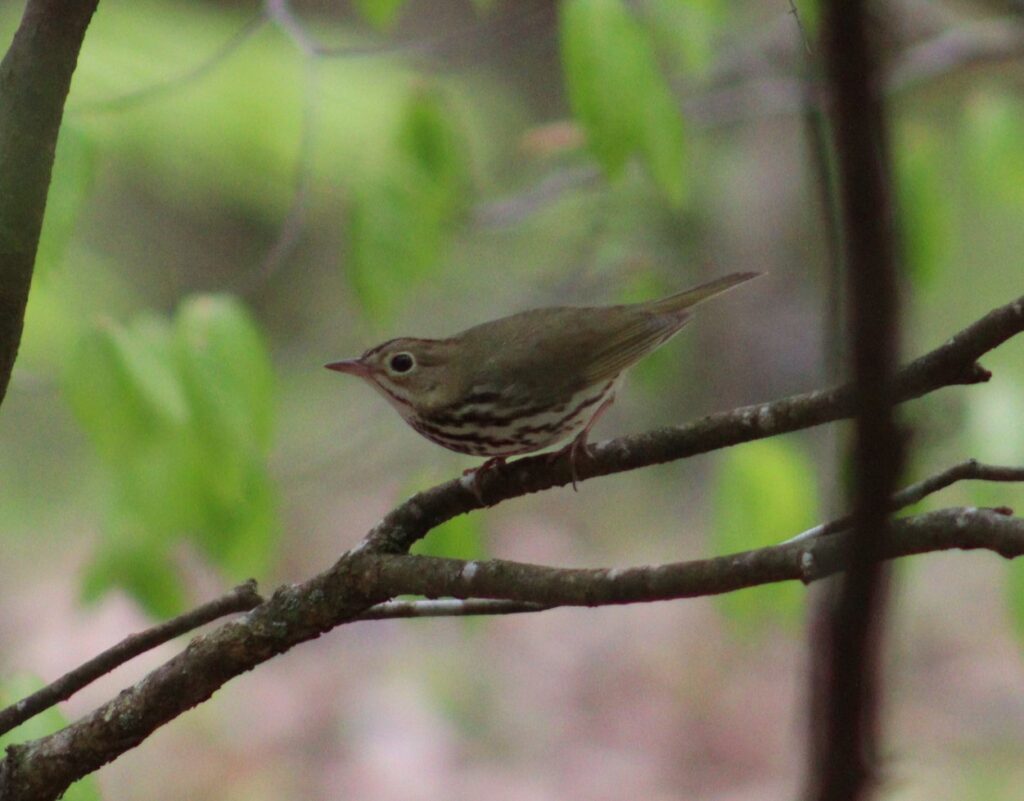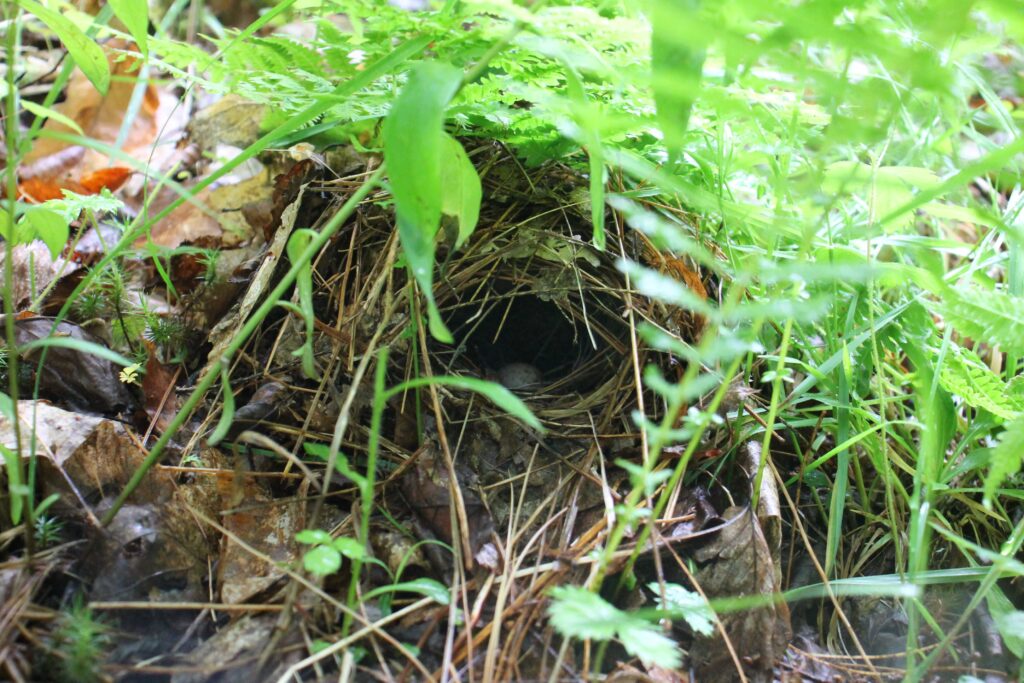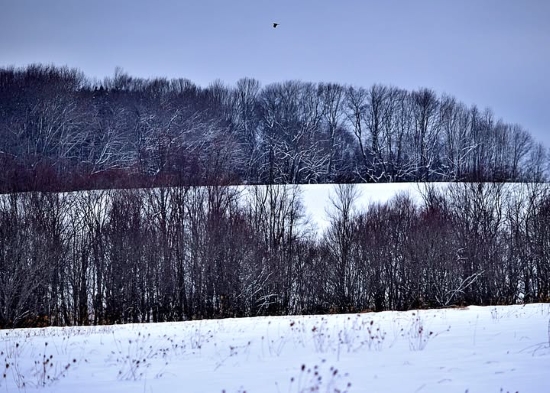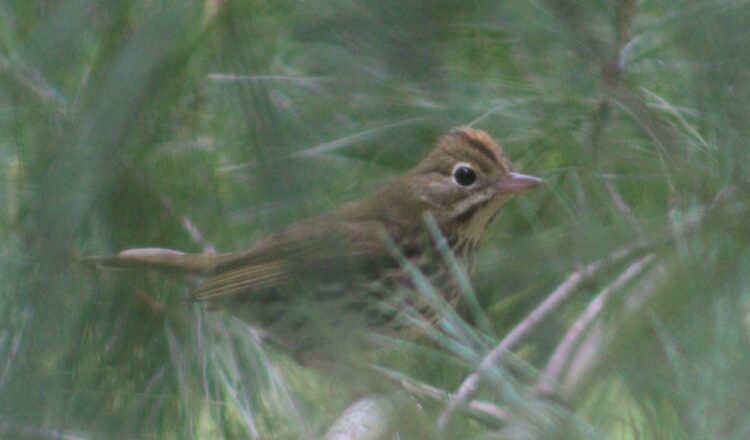Learn more about the “dominant warbler of the woods”
By Bob Confer,
In the lowlands of Allegany County, and especially around the rivers and streams in those valleys, the yellow warbler reigns supreme. In such locations, it is the most abundant and recognizable of the warblers. With its bright yellow plumage and its habit of flying limb to limb chasing insects, it’s what one would expect a warbler – known as the butterflies of the bird world – to look like and act like.

Head into the neighboring hills and mountains and it’s a different story. There, the telltale teacher-teacher-teacher-teacher call of the ovenbird rings through the springtime forests, cementing its place as the dominant warbler of the woods.
Once seen, it’s not something you’d expect out of a warbler. Some new birders might even think it’s a small thrush: It lacks the yellows, greens, and blues of other warblers; instead it has a brown back and a white breast with black spots. The only hint of warbler is the small orange crown or mohawk. It even feeds differently, walking around on the forest floor in search of its next meal, far below the other warblers feeding in the canopy above.
And the ground is where the ovenbird makes its nest, too. There, the bird makes a crowned nest, looking like a pile of leaves and grass. It’s said to look like a Dutch oven – hence the ovenbird’s name. But, it is not an oven…the female just can’t lay eggs in there and walk away. She still has to sit on them. She does so by entering and exiting a side entrance to that tiny nursery.

Well-camouflaged, these nests are very difficult to find. So, if you are walking on a trail in May or June and you flush a distressed ovenbird that nervously hangs out on a nearby branch, recollect where you saw her come from and carefully walk away from that spot, keeping your eye on the ground. She exits the nest at the last possible second when danger is present, so be careful – you are very near the nest!
The ovenbird prefers larger forests (240 acres and more) with older trees (canopy heights in excess of 60 feet). Those spacious and darker forests lack the undergrowth and thick brush of younger woodlands, affording the ovenbird the chance to hunt the ground, where it feeds by sight or by flipping over leaves in search of insects and other invertebrates.
While many other species of birds are in decline, the ovenbird is not. Since the close of World War II, numerous family farms have shut down across the state and reverted to forest. As that has happened, the ovenbird has seen a rebound to numbers closer to those of the pre-colonization days. The Breeding Bird Atlas of New York State has showed an significant increase in breeding populations that, only in the past twenty-five years has slowed down to an 1.5% annual increase in numbers, which is still pretty special given the dire prospects facing other birds across North America.
This month, appreciate this common and loudly-singing sprite of our forests…just be careful where you walk.






